In Puerto Rico’s urban areas brightly colored wood and masonry buildings influenced by the Spanish coexist with modern concrete structures (Figure 1). A century after the 1918 Mw 7.1 San Fermín earthquake, the island was rocked by a series of quakes that began on December 28, 2019, and culminated in an Mw 6.4 mainshock on January 7, 2020.
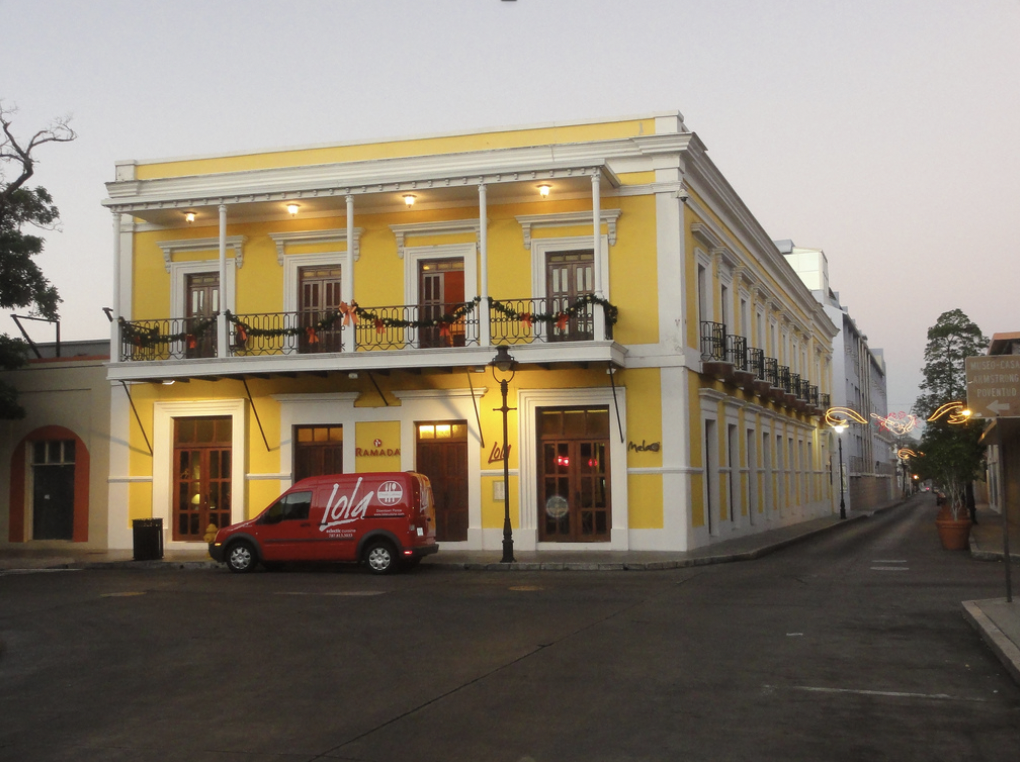
AIR engineers visited Ponce, Guánica, and Yauco along the southern coast of the island to inspect structural damage from the recent quakes and to speak with local engineers working on reconstruction. The patterns of structural damage seen in reinforced concrete and masonry buildings is well-documented from past earthquakes. Our survey found four damage mechanisms particularly prevalent in the neighborhoods visited.
1. Short-Column Damage
Short columns are less than the typical column height in a structure. Uneven ground level, intermediate floor levels, and infill wall openings are typical reasons for their presence (Figure 2). Short columns are relatively stiff, and therefore brittle, compared to regular columns. Their short height attracts large seismic forces, leading to severe damage and failure if they are not designed and/or reinforced appropriately.

The widely reported school collapse in Guánica is a good example of short-column failure. The school had rows of open windows for ventilation at the top of its walls (Figure 2). Short columns were present in the walls to carry the weight of the floors above. During the earthquake, stress concentration and inadequate reinforcement among short columns likely led to their failure and collapse of the building (Figure 3). According to news reports, as many as 500 of the 855 schools in Puerto Rico have short columns with the potential to collapse in a strong earthquake. Many of these schools were built before 1987, the year Puerto Rico enacted its first seismic code, which adds to concerns for the safety of students.
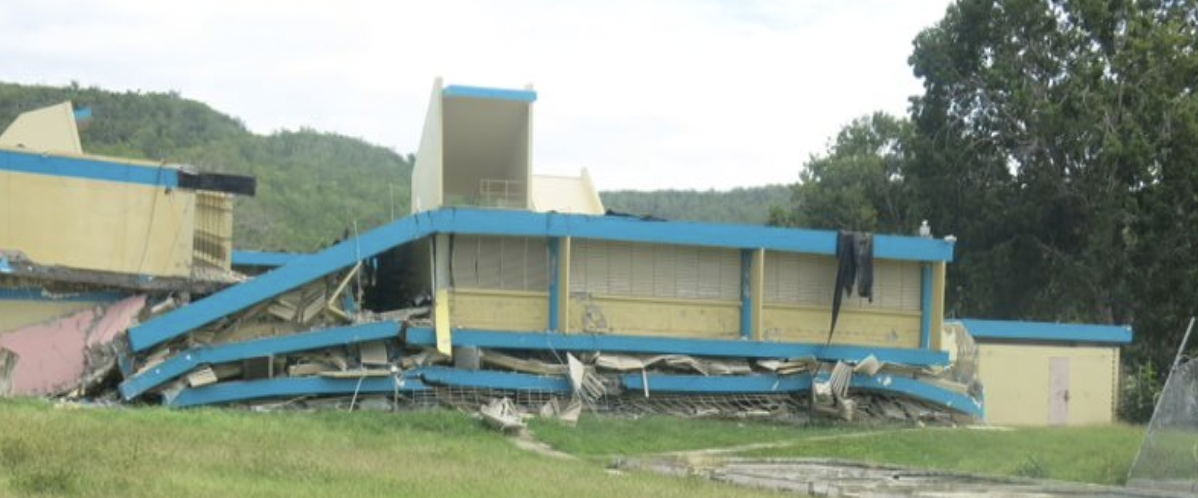
2. Soft-Story Damage
Any level in a building that has noticeable stiffness/strength reduction in comparison to floors above or below is known as soft/weak-story.. They are typically present in mixed-use buildings that incorporate large open spaces. Examples include condominiums, hotels, or offices with lower levels used as parking garages and commercial spaces such as shops or restaurants. Due to their weak lateral strength, soft stories pose a significant threat because they often lead to collapse during an earthquake.
Severe soft-story damage leading to collapse was observed in both Guánica and Yauco. During the survey we noted particularly that many old and new residential buildings built on stilts attached to the foundation were either collapsed or severely damaged (Figure 4). This form of construction is widely used where lots slope (because it is often cheaper than leveling the ground), or to provide ventilation or protection from storm surge. However, the stilts form a very serious threat in earthquakes due to their low lateral strength, acting as a soft/weak story, unless they are anchored or strengthened to provide the necessary lateral resistance. Along the southern coast of Puerto Rico, the residential buildings built upon stilts that survived with minimal or no damage were those with strengthened stilts.
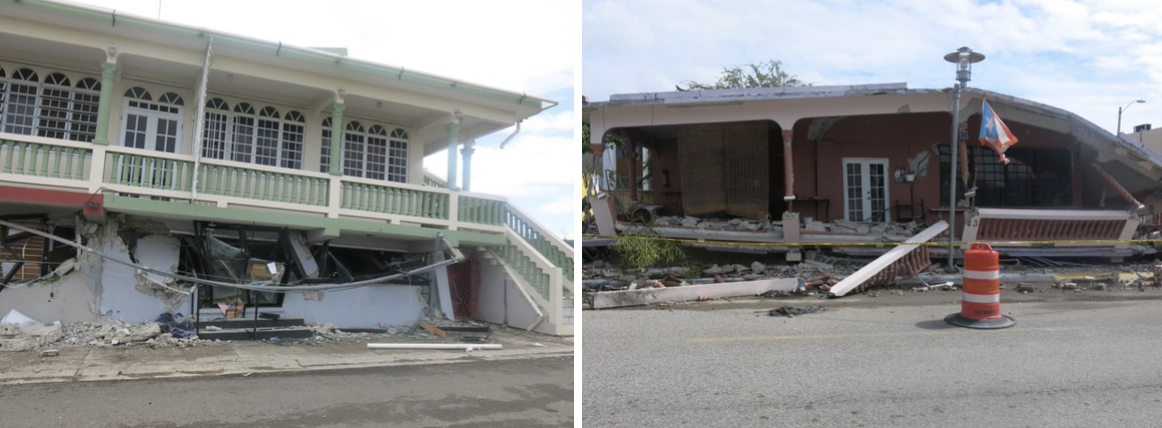
3. In-Plane Damage
A common wall construction in Puerto Rico is of masonry, and in most cases, they are not reinforced. These load-bearing walls are generally not designed to resist lateral force imposed by earthquakes. During earthquakes, a common observation of these walls is the development of diagonal cracking commonly referred to as shear failure. When there are wall openings, cracks generally start from four corners of the opening as shown in the photos below (Figure 5). Fortunately, the in-plane cracking did not develop into out-of-plane collapse because of the relatively moderate shaking during this earthquake.
The AIR team identified several cases of in-plane damage in Ponce, Yauco, and Guánica. The most noteworthy examples of in-plane damage causing substantial disruption were the Hospital De Damas and guesthouse Casa Sauri in Ponce and the Hospital Pavia in Yauco. While none of these sustained any significant structural damage (confirmed by speaking with chief engineers involved in restoration) Casa Sauri sustained moderate structural damage (Figure 5).
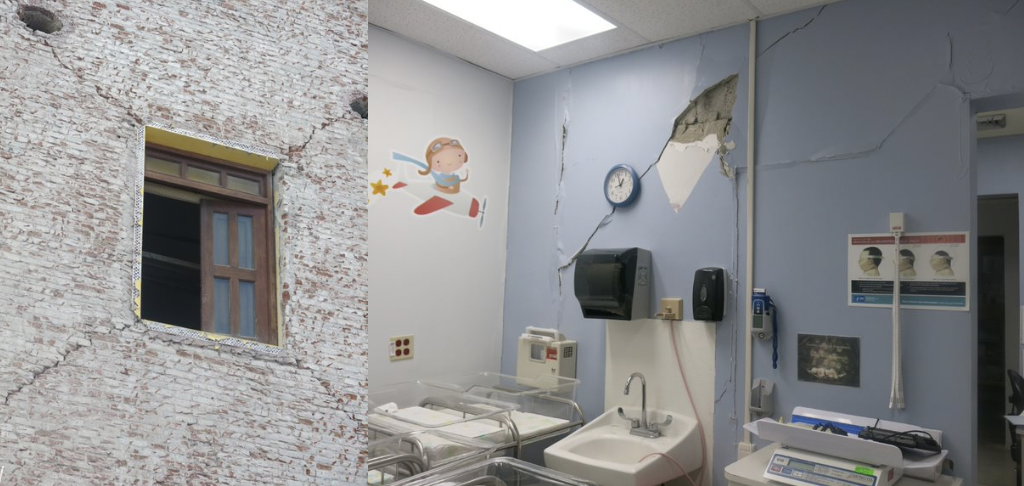
4. Inadequate Reinforcement
During a powerful earthquake extreme forces are placed on a building. The structure is prone to significant failure in the absence of strength or the ability to deform (change in shape or form under stress or strain). This ability to deform safely without collapse is referred to as ductility and is a fundamental principle behind the seismic building codes adopted in the past few decades.
Ductility in a building is commonly achieved by using detailed reinforcement in locations where the failure potential is high, such as beam-column connections, allowing for safe lateral deformation. The absence of adequate structural reinforcement, however, often leads to non-ductile structural failures.
Many structural failures due to inadequate reinforcement were observed in Guánica and Ponce. No structural damage was observed in buildings that had been retrofitted, while older structures built when no building codes were available or prior to the detailing requirements in the code sustained damage (Figure 6).
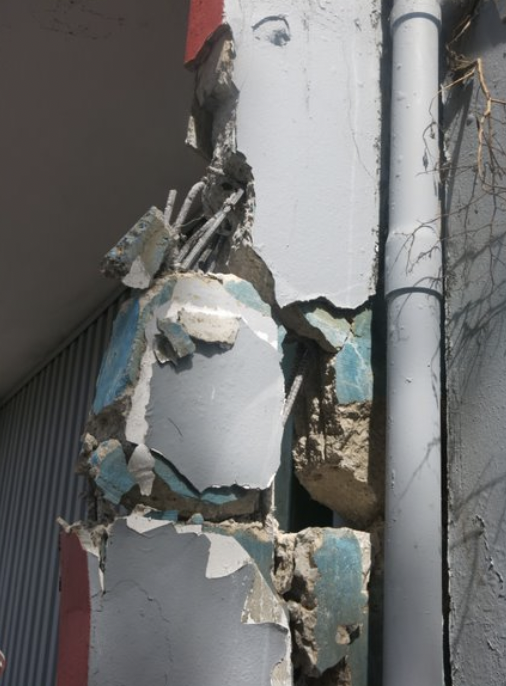
The Importance of Building Codes
The patterns of structural damage summarized in this blog indicate the broad behavior observed on the southern coast of Puerto Rico. It is worth noting, however, that the survey indicated other patterns of damage such as out-of-plane walls and failures caused by poor quality construction.
Our Puerto Rico damage survey illustrates the threat to structures that were not built to the latest seismic regulations. This is evident in the regional damage patterns as well. Ponce, which has better code enforcement, sustained relatively lower damage compared to Guánica and Yauco. According to FEMA and media reports, as many as 50% of the structures in Puerto Rico are not built to any hazard codes due to the lack of processes for code certification during their construction. This is particularly worrying for an island that experiences so many natural disasters. However, it is also an opportunity to use the lessons drawn from recent earthquakes and hurricanes to help build a more resilient community and protect its rich architectural heritage.
To learn more about Caribbean seismicity, read “Caribbean Earthquakes Can Be Devastating”




